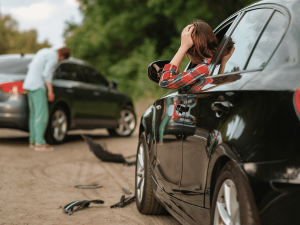
In auto accident investigations, traditional reconstruction methods—such as skid mark analysis, vehicle damage assessment, and scene measurements—are essential in determining what happened and who may be at fault. However, these methods alone often fall short when it comes to answering a critical question: Could this crash have caused the claimed injuries?
This is where biomechanical analysis adds a crucial layer of insight. By applying principles of physics, anatomy, and injury mechanics, biomechanical experts help bridge the gap between collision forces and human injury potential. When used alongside traditional accident reconstruction, biomechanical analysis offers a more complete understanding of both how an accident occurred and what physical effects it likely had on the people involved.
What Is Biomechanical Analysis?
Biomechanical analysis evaluates how the forces from a vehicle collision affect the human body. This involves studying:
The magnitude and direction of forces exerted during a crash
Occupant movements within the vehicle at the time of impact
Injury mechanisms, such as compression, shear, or acceleration
Medical records, imaging, and clinical diagnoses to assess injury causation
Biomechanical experts typically have backgrounds in engineering, kinesiology, and human physiology, and they use data from crash testing, injury biomechanics research, and vehicle dynamics to support their findings.
Traditional Accident Reconstruction vs. Biomechanical Analysis
Traditional Accident Reconstruction
Focuses on:
Vehicle speeds and angles
Collision dynamics
Roadway evidence (skid marks, debris patterns)
Mechanical failures or driver actions
Biomechanical Analysis
Focuses on:
Whether the forces involved were sufficient to cause specific injuries
The plausibility of injury claims given crash severity
The expected movement of occupants in relation to seat belts, airbags, and seating position
While accident reconstruction establishes the “how” of a crash, biomechanical analysis investigates the “so what.”
Why Add Biomechanical Analysis?
1. Injury Causation Clarity
Claimants may allege serious injuries in seemingly minor accidents. A biomechanical expert can determine if the crash forces were consistent with the reported injuries, such as:
Whiplash
Concussions
Disc herniations
Soft tissue trauma
This is particularly helpful in low-speed collisions where vehicle damage is minimal, but injury claims are significant.
2. Disputing or Supporting Injury Claims
Insurers, defense attorneys, and plaintiff attorneys all use biomechanical experts to validate or challenge whether an accident caused the injuries in question. These insights can strengthen a case by:
Confirming injury mechanisms aligned with crash forces
Identifying alternative injury causes (e.g., pre-existing conditions, unrelated events)
3. Evaluating Occupant Kinematics
Biomechanical analysis can also assess how occupants moved during impact—whether their body position or seat belt use contributed to or mitigated injury. For example:
Did the airbag deploy in a way that caused or prevented injury?
Was a child in the proper restraint system?
Did a pre-impact posture (e.g., turned head) increase injury risk?
4. Expert Testimony Support
Biomechanical experts are trained to clearly explain technical concepts to juries and judges. Their testimony often complements that of accident reconstructionists and medical experts, creating a cohesive and scientifically grounded narrative.
Case Example: Low-Speed Rear-End Collision
A driver claims chronic neck pain after a 5-mph rear-end collision. The damage to both vehicles is minor, with no airbag deployment. Traditional reconstruction confirms the low-speed nature of the impact.
A biomechanical expert reviews:
Delta-V (change in velocity) data
Crash test data from similar impacts
Medical records and diagnostic imaging
Occupant posture and seatbelt use
They conclude that the forces involved were below commonly accepted injury thresholds and that the claimed disc injury is more likely degenerative than traumatic. This analysis significantly alters the legal strategy and potential settlement value.
Conclusion
Traditional accident reconstruction answers what happened in a collision. Biomechanical analysis answers what it did to the people involved. Together, they provide a powerful, multidimensional view of auto accidents—especially in cases involving disputed or complex injury claims.
By integrating biomechanical analysis into accident investigations, attorneys, insurers, and investigators can achieve a more accurate, defensible understanding of both causation and injury potential. In an era of increasingly contested personal injury claims, this depth of analysis is not just helpful—it’s essential.
Recent Posts
- Collaborating Experts: When Forensic Engineers and Attorneys Work Together
- Product Failure Analysis: When Consumer Devices Become Courtroom Evidence
- Forensic Electrical & Fire Investigation Collaboration: When Multidisciplinary Expertise Saves the Case
- Biomechanical Injury Analysis: How Science Proves or Disputes Injury Claims
- How Structural Engineers Help Uncover the Cause of Building Failures

Leave a Reply